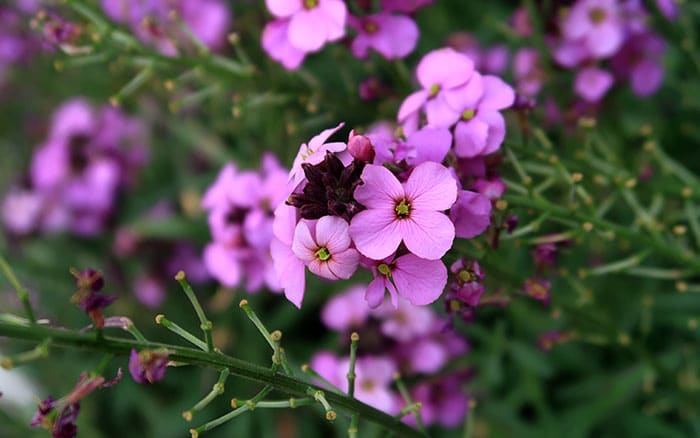Strong winds can be a gardener’s worst nightmare, especially salty winds in coastal areas. However, there are plenty of plants for gardens with high wind.
There are things you can do to help reduce the amount of breeze flowing in your garden. There are also shrubs and trees you can plant that deal with the wind very well.
So, to help out, here are some different plants suited to strong winds, including coastal salty winds. Find out how you can still have a thriving garden, no matter where you live!
Plant for the wind
Before trying to block the breeze, embrace it!
Below are some plants that are good at tolerating strong winds, but if none of these take your fancy, try some ornamental grasses first, they enjoy the wind and I think they look spectacular when swaying around in the breeze. Not only that but the soundtrack of sweeping grass will be sure to add to your garden atmosphere.
Remember that you want plants that have pliable branches and deep roots such as the following.
Acer platanoides
Amorpha canescens
Carpinus betulus
Choisya ternata
Cotoneaster sominsii
Crataegus x lavalleei ‘Carrierei’
Daisies
Daylillies
Erysimum
Fraxinus ornus

Hollies
Hydrangea
Laurus nobilis
Lavender
Miscanthus
Philadelphus ‘Belle Etoile’
Phormium tenax
Rosa Felicia
Rosa Celeste
Zinnia

Plants for the coast
If you live in or near the coast, you may experience problems with wind. Winds near the coast carry salt, making leaves and branches appear burnt. Even if you live a few miles in land, you may be struggling with planting in your garden.
The following plants are very hardy and tolerate salt winds extremely well.
Achillea
Acer
Arundinaria
Alchemilla mollis
Armeria (sea pink)
Calendula
Centranthus (valerian)
Crocosmia (montbretia)
Cordyline
Crataegus
Cytisus (broom)
Dietes bicolor
Echium
Erigeron (fleabane)
Eryngium (sea holly)

Eucalyptus
Fraxinus angustifolia
Fuchsia magellanica
Genista aetnensis
Griselinia littoralis
Hebe
Helianthemum (rock rose)
Lavandula
Leycesteria formosa
Limonium (stacice)
Olearia
Phormium
Rosa
Rosemary
Sedum
Thyme

Build a windbreak
Alternatively, you can plant or build a windbreak. It’s possible to make them out of artificial solutions but in my experience, these don’t work so well because the wind will just fall over it, rather than being broken. So, you’ll need something semi-permeable.
A suitable semi-permeable barrier can be made from shrubs or trees that filter the wind, only letting around 40%-30% of the wind to pass through. You need plants that are strong rooted.

I’d suggest using wind-tolerant trees and shrubs to make a shelter belt. The following trees and shrubs withstand wind quite well and are strong enough to limit the amount of breeze entering the garden. You may still need to plant tough plants behind the windbreak, but they should develop and withstand even better!
Trees suitable for a windbreak
Arbutus unedo
Carpinus betulus
Hollies
Nothofagus
Prunus lusitanica
Umbellularia californica

Shrubs suitable for a windbreak
Berberis darwinii
Choisya
Cotoneaster
Hydrangeas
Lavenders
Rosa clauca
Viburnum tinus

When planting your windbreak, be mindful of the fact that it can spoil the view, or cause shade where you don’t want it, so be sure to take these things into consideration when planning.
An alternative would be to build a small bank with a few shrubs planted on top, and this will help restrict wind in the lower levels of the garden.

Would Fraser Island Apple be suited in large pots on the 40th floor balcony of a high rise building
Thankyou
EJ
Hi EJ,
Thanks for your comment.
Acronychia Imperforata or Fraser Island Apple is a hardy evergreen that is usually grown in coastal areas and makes a great windbreak, so it should tolerate conditions at a high level. Use a sandy soil in the pots and be careful not to over water once the plant has become established. I hope this helps!
Doesn’t help a bit. I am trying to grow tomatoes, not flowers. You can’t plant anything on the high plains. Poor soil and too much flippin wind. I hate Colorado.